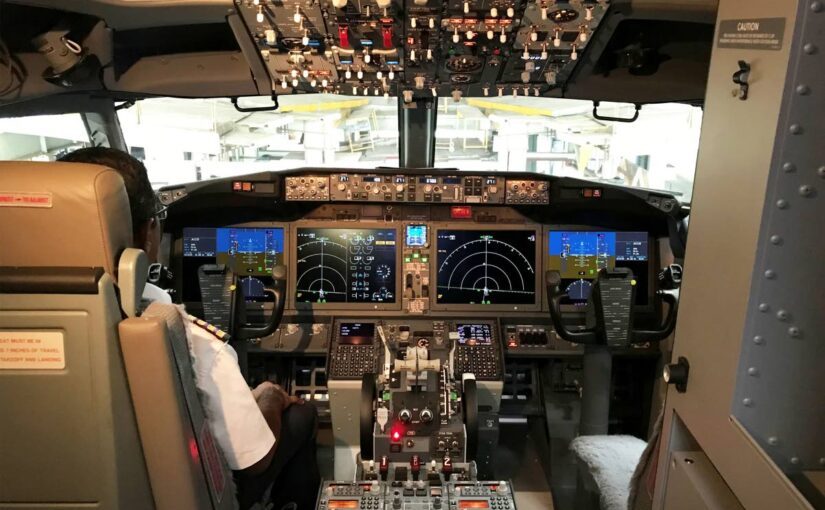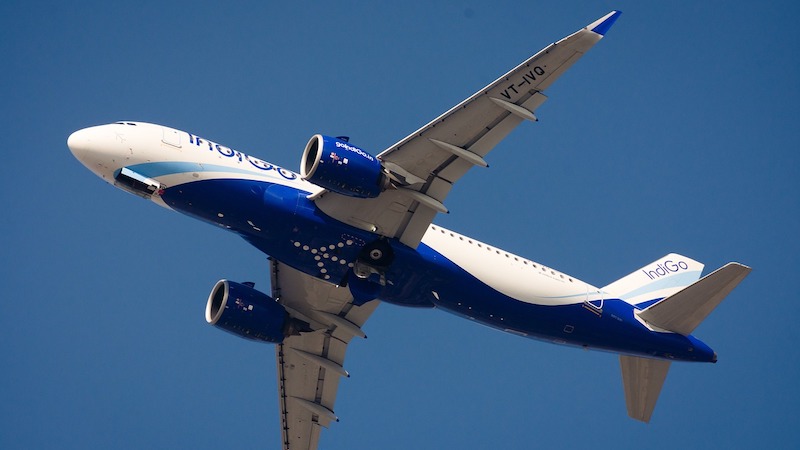Pilots of a Dreamliner from Doha to Manchester have declared an emergency. Qatar Airways flight QR23 departed Hamad International Airport in Doha...
Vous n'êtes pas connecté
- English
- Français
- عربي
- Español
- Deutsch
- Português
- русский язык
- Català
- Italiano
- Nederlands, Vlaams
- Norsk
- فارسی
- বাংলা
- اردو
- Azərbaycan dili
- Bahasa Indonesia
- Հայերեն
- Ελληνικά
- Bosanski jezik
- українська мова
- Íslenska
- Türkmen, Түркмен
- Türkçe
- Shqip
- Eesti keel
- magyar
- Қазақ тілі
- Kalaallisut ; kalaallit oqaasii
- Lietuvių kalba
- Latviešu valoda
- македонски јазик
- Монгол
- Bahasa Melayu ; بهاس ملايو
- ဗမာစာ
- Slovenščina
- тоҷикӣ ; toğikī ; تاجیکی
- ไทย
- O'zbek ; Ўзбек ; أۇزبېك
- Tiếng Việt
- ភាសាខ្មែរ
- རྫོང་ཁ
- Soomaaliga ; af Soomaali
Rubriques :
 Maroc - NEWSDAY.CO.TT - A la Une - 08/08/2024 06:42
Maroc - NEWSDAY.CO.TT - A la Une - 08/08/2024 06:42
History of the aircraft cockpit
The term cockpit is used to describe the area at the front part of an aircraft from which pilots control it during flight. The standard definition for flight is any period from the moment when all the external doors of an aircraft are closed after embarkation for takeoff until the moment when any of these doors are open for disembarkation after landing. The original meaning of cockpit, first attested in the 1580s, is "a pit for fighting cocks," referring to the place where cockfights were held. The first reference to a cockpit was during the 1500s in the Philippines, where roosters were bred to fight each other for wagers in a ring called the cockpit. This meaning no doubt influenced other emerging meanings of the term, since a cockpit in this context, was a tight enclosure. Further research on the etymology of the word cockpit suggested that it was used during the 17th century as a nautical term, without reference to cockfighting. Rather, it was an area in the rear of a ship where the coxswain's station was located. The coxswain was the pilot of a smaller boat that could be dispatched from the ship to board another ship or to bring people ashore. The word "cockswain" in turn derives from the old English term for "boat-servant." Coque is the French word for shell and "swain" was old English for "boy" or "servant." The midshipmen and master's mates were later berthed in the cockpit, and it served as the action station for the ship's surgeon and his mates during battle. By the 18th century, the cockpit had come to designate an area in the rear lower deck of a warship where the wounded were taken. The same term later came to designate the place from which a sailing vessel is steered, because it is also located in the rear, and is often in a well or pit. However, a convergent etymology does involve reference to cockfighting. According to the Barnhart Concise Dictionary of Etymology, the buildings in London where the monarch's Cabinet worked (the Treasury and Privy Council) were called the "cockpit" because they were built on the site of a theatre called the Cockpit, which was torn down in 1635. The theatre itself was built in the place where a "cockpit" for cockfighting had once stood. Thereafter, the word cockpit was generally used to refer to a control centre. In the early days of aviation, pilots controlled aircraft from open-type cockpits, that is, without canopies. The open cockpit was sized for a single-pilot operation and pilots had to wear goggles and helmets to protect both their eyes and heads from birds and large flying insects such as locusts. In the early days of transnational commercial air transport, aircraft cockpits were fully enclosed and designed to accommodate at least five people. At the very front of the cockpit on the left-hand side sat the commander or captain and the co-pilot or first officer sat on the right. Both the captain and the first officer had the requisite competencies to safely operate the aircraft throughout all phases of flight, from takeoff to landing. Seated behind the pilots were the radio operator, the navigator and the flight engineer. The radio operator's functions were to maintain communication between air traffic control to ensure the flight was following the filed flight plan. The navigator used charts, maps and instruments such as sextants to plan the course to take an aircraft to its destination. The radio operator and the navigator worked in close co-ordination to provide the pilots with timely information to keep the aircraft on course. The flight engineer was responsible for monitoring flight instruments on an instrument panel that included engine RPMs, pressures and quantities of engine oil, hydraulic systems and electrical generator voltages, etc. If there is a malfunction on an engine such as a loss of oil quantity, the flight engineer will advise the pilots to shut down the engine. During the 1960s, emerging technologies in aircraft design and ground-based radio navigational aids reduced the need for radio operators and navigators in aircraft cockpits, resulting in a standard three-person cockpit of pilot, co-pilot and flight engineer. [caption id="attachment_1101141" align="alignnone" width="878"] -[/caption] From the 1980s, further automation through technological advances reduced the workload of pilots, resulting in the emergence of the two-person cockpits. This was augmented by the aircraft's innovative flight management system, which can be coupled with the space-based Global Positioning System (GPS), which was approved for civilian use and became the primary navigation aid for most aircraft. Glass cockpit technology replaced analogue instrumentation with flat plate screens that enhanced cockpit displays and versatility. Modern spacious cockpits are now being called "flight decks," mainly owing to the additional workspace available compared to the earlier cramped cockpits. The flight deck of the Boeing 787 Dreamliner introduced new technologies to help pilots work more efficiently and safely. The Dreamliner advanced flight deck leverages state-of-the-art technology to improve operational capabilities and provide flight crews with a clean, simplified look and feel. The total number of parts in the 787 flight deck has been reduced compared to other aeroplanes. The three tuning control panels in the flight deck aisle stand were developed for the 787 and replaced functionality that previously required several independent control panels. This consolidates crew interface functionality for communication and surveillance systems, reducing the number of unique aisle stand panels and increasing backup capability. The 787 Dreamliner features the largest forward display screens of any certified airliner, with five multi-function displays. The displays provide more than twice the area of those of the Boeing 777, giving pilots more information and significant flexibility to tailor the display layout to their needs for each phase of flight. Standard features include an airport taxi map integrated into the forward navigation display, which enhances ground taxi safety and is a platform for future capability, such as the display of ADS-B ground traffic in the airport environment. Today, modern aircraft cockpits are indeed a pilot’s dream. The post History of the aircraft cockpit appeared first on Trinidad and Tobago Newsday.
Articles similaires
Qatar Airways QR23 is declaring an emergency on approach to Manchester
Pilots of a Dreamliner from Doha to Manchester have declared an emergency. Qatar Airways flight QR23 departed Hamad International Airport in Doha...
Woes Of IndiGo, India’s Largest Airline – Analysis
The unprecedented cancellation of over 2000 flights by India's largest airline IndiGo earlier this week leaving thousands of passengers stranded...
Flight operations halted at Edinburgh Airport, Delta DL208 is declaring an emergency due to low fuel
Pilots of a Boeing 767 have declared an emergency, the flight is diverting. Delta Air Lines flight DL208 was scheduled to land in Edinburgh at 09:45...
easyJet flight to Liverpool is declaring an emergency and diverting to France
An easyJet flight from Spain is diverting to France after crew declared an emergency. EasyJet flight U23356 departed Alicante at 11:34 CET today for a...
Nigerian Air Force Pilots Hailed for Bravery After Alpha Jet Suffers In-Flight Emergency
The Nigerian Air Force (NAF) has applauded the courage and professionalism of two Alpha Jet pilots who successfully ejected after their aircraft...
Updated: NAF Hails Alpha Jet Pilots for Courage After Mid-Air Emergency at Kainji Base
The Nigerian Air Force (NAF) has commended two Alpha Jet pilots for their exceptional courage and professionalism after safely ejecting from their...
Updated: NAF Hails Alpha Jet Pilots for Courage After Mid-Air Emergency at Kainji Base
The Nigerian Air Force (NAF) has commended two Alpha Jet pilots for their exceptional courage and professionalism after safely ejecting from their...
10 Most Interesting Aerospace News of 2025
The year 2025 saw the Malaysian fighter jet crash, the search for MH370 began and restrictions on the use of power banks were introduced by several...
10 Most Interesting Aerospace News of 2025
The year 2025 saw the Malaysian fighter jet crash, the search for MH370 began and restrictions on the use of power banks were introduced by several...
Les derniers communiqués
-
Aucun élément



